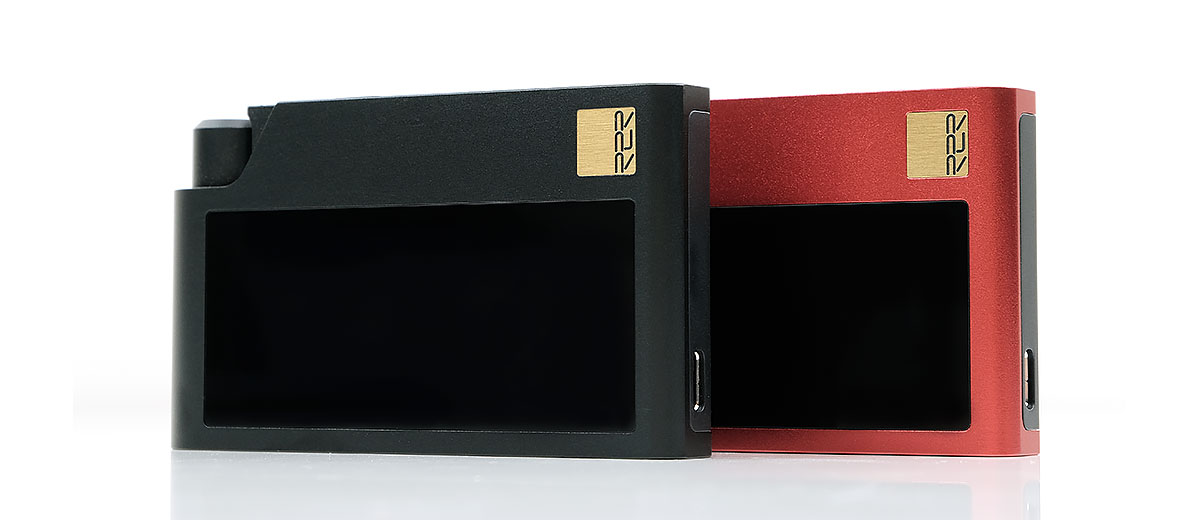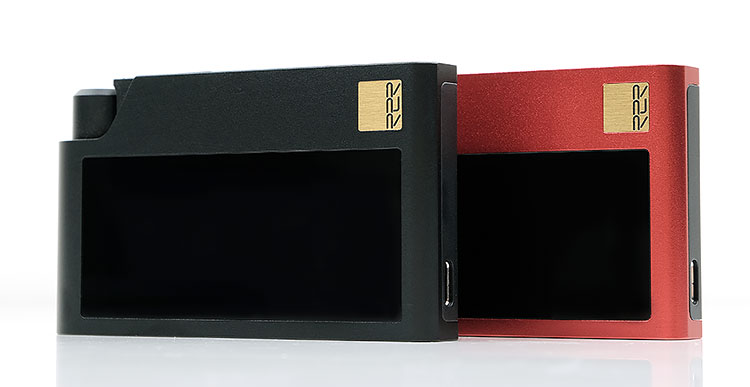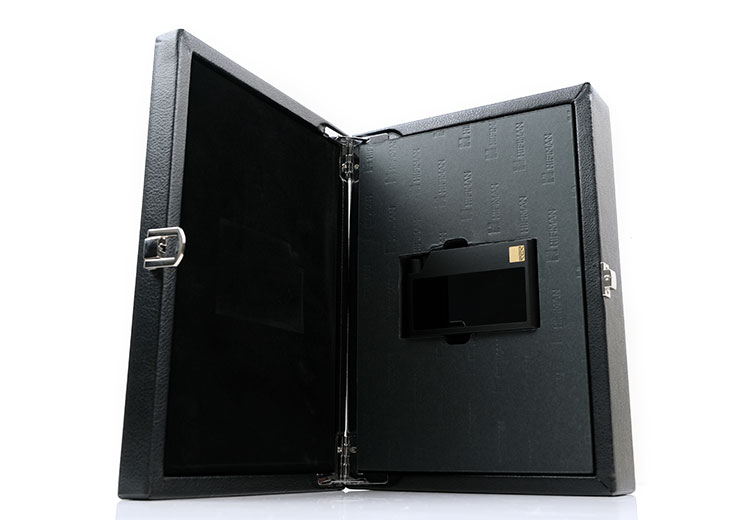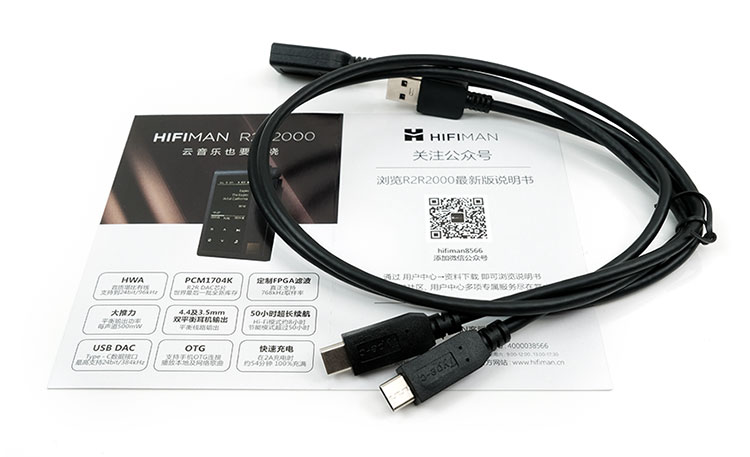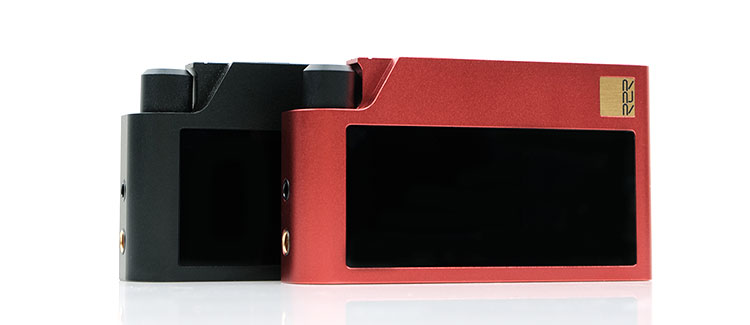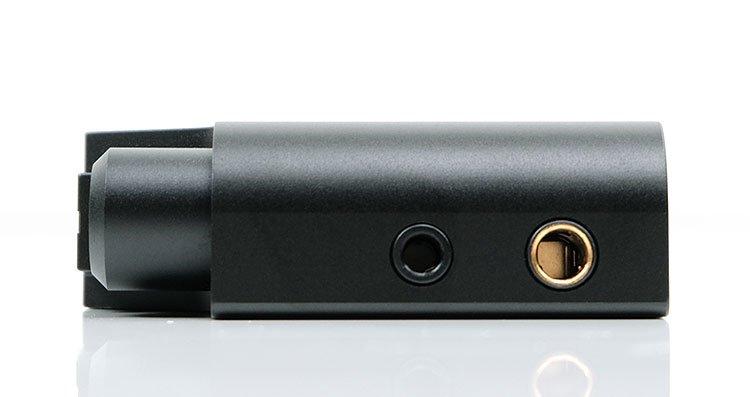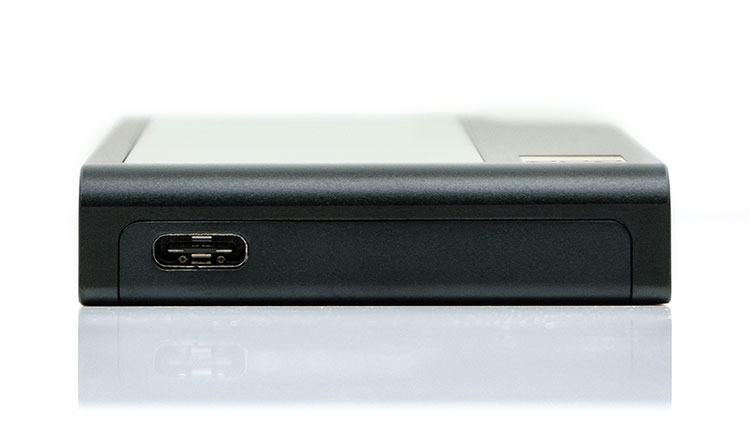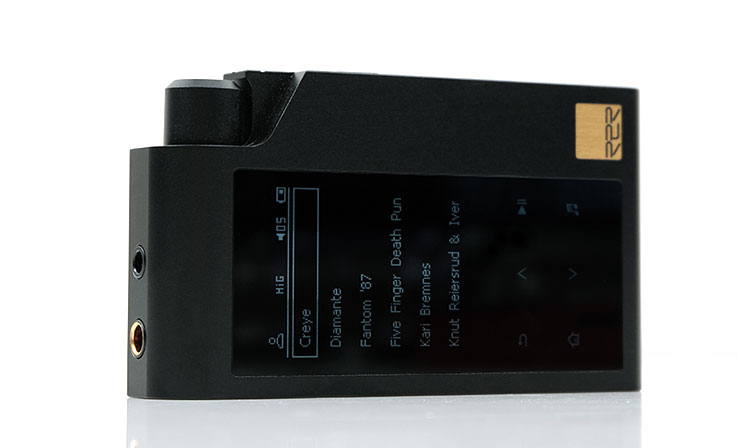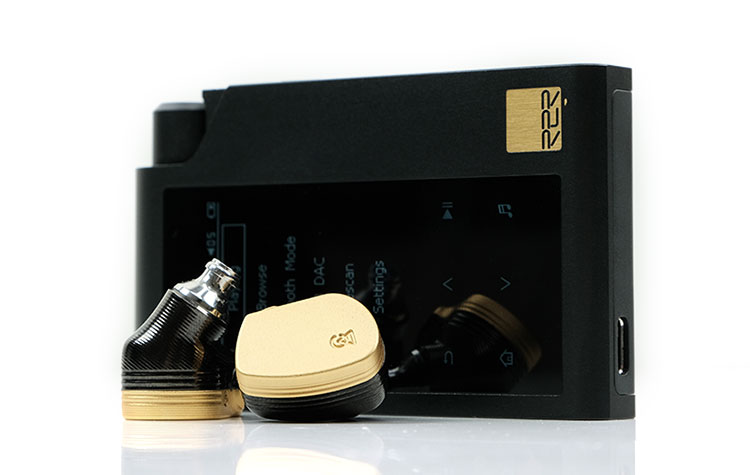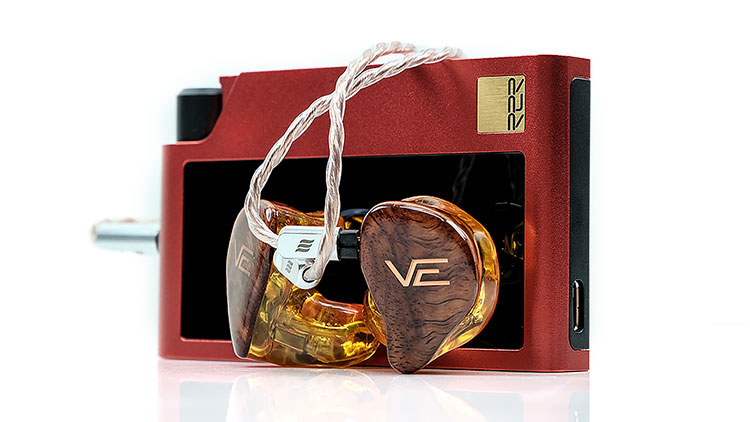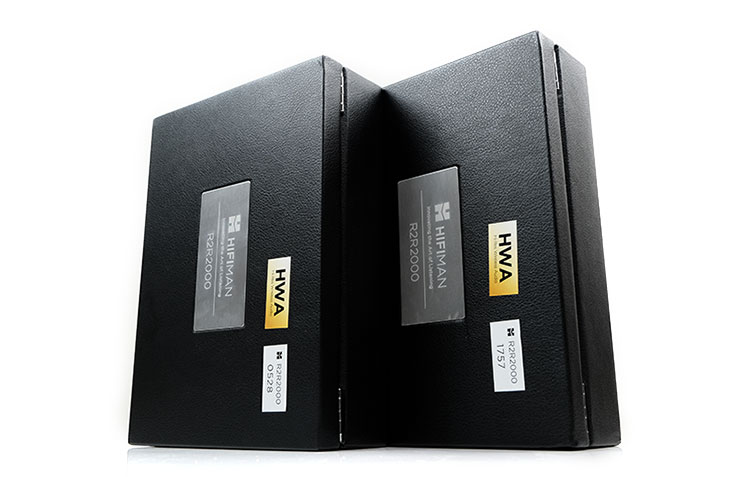The Hifiman R2R2000 Red & Black Editions are the company’s newest Hi-Res Bluetooth receivers using dual PCM1704K R2R, (Black) and PCM1702 R2R, (Red) DACs. They are priced at $2500 for the Black and $999 for the Red Edition.
Disclaimer: The Hifiman R2R2000 Red & Black Editions sent to us are samples in exchange for our honest opinion. We thank the team at Hifiman for giving us this opportunity.
To read more about Hifiman products we reviewed on Headfonics click here.
Update July 2020 you can now read the full review by clicking here.
This seems to be the weekend for boutique portable media devices with the Dethonray DTR1 landing and now not one, but two portable and very unique devices from Hifiman under the same banner name, R2R2000.
The R2R2000 comes in two editions, Black and Red. Both are primarily HD Streaming Audio devices but have a high degree of portability including media player level interaction. They can slot in as USB-DAC’s and feed desktop amplifiers but also have enough power and precision in their own right for portable audio playback with good quality headphones and a wide range of monitors.
Tech Inside
Multibit
The key difference between the two is the multibit DAC chipset inside each one. The Black is the high-end version retailing at $2500 and uses the classic but very hard to find multibit 24-BIT Texas Instruments PCM1704K DAC chipset.
The recently launched Red Edition of the R2R2000 is also multibit but uses the more readily available a slightly lower-tier 20-BIT PCM1702 DAC chipset. Quite apart from the tonal differences between these two, and there is some, the PCM1704K R2R chipset ideally will be the higher technical performer.
Now, the PCM1704K is an old chipset but one of the most highly regarded R2R performance multibit DACs out there. Apparently Hifiman has bought the last remaining stocks of these chips worldwide and as such the Black Edition will be the last of its kind. Once they are all gone, there will be no more Black units so treat them as Limited Editions if you will.
Hence the price gap between the Red and Black units is rather large because of costs in procuring the PCM1704K in bulk compared to the PCM1702.
Bluetooth
The BT functionality of both R2R2000 units is the primary pitch on how these devices should be seen and used. Admittedly old school guys like me will explore its potential as a DAP a lot but this should be seen as an added bonus given the marketing material on the site and how they position the device.
There is a good reason for that pitch because of the codec and protocol capability of the R2R2000. Now Hifiman has defined their top-tier BT codec as SHDC capable but in other codenames its more commonly referred to as LHDC which stands for low latency and high-definition audio codec and is on par with LDAC at 900kbps capability.
The origin of SHDC/LHDC, (and HWA for that matter) comes from Huawei proprietary codec development with Savitech but it is a feature that does crop up a lot in both smartphones such as my own Huawei P20 and in apps such as FiiO’s Music Player for BT, (HWA).
In a nutshell, this codec is about as close as you can get to a wired lossless transmission right now outside of HiBy’s own UAT proprietary codec with enough bandwidth to deliver a very uncompressed signal. Dynamic range should increase, latency should be very low, details should be clearer to make out and the sound much less ‘colored’ compared to aptX and even aptX-HD.
Unboxing & Accessories
The packaging reminds me a little of the original RE2000 universal monitor. The heritage of the leather latch lock case is drawn from the original HE series headphone boxes or closer to the HE400i original case more than anything, just flatter and smaller.
I kind of like them as a display case but they are huge and must cost a fortune logistics wise for such a dinky little player. There is a ton of unused real estate space in that box which some may find useful for stuffing in all manner of accessories and cables. Not a portable display case but definitely transportable and offers tons of protection for the R2R unit itself.
Both the R2R Black and Red come in exactly the same leather boxes and packaging and are distinguishable only by the serial coding sticker on the outside though quite how you would fathom which is a red code and which is a black code is beyond me. I would love to see the Red one come in a faux red leather case just to be more ‘unique’.
Accessories
To access the accessories you simply lift out the R2R unit and then lift up the top protective layer. The list of accessories is not exactly overwhelming for the price points of each unit and you do get the same set of accessories for both units. This includes a USB-C to USB-A data and charging cable with an extension cable as well as your manual and warranty guides.
What this really needs is a protective case of some sort, be it silicone or faux leather or even real leather. You can get these on Taobao but they are not cheap at around $80 upwards. Some film protectors for the front and rear would have been just dandy since I cannot find any 3rd party alternatives at the moment.
Design
The R2R2000’s are much smaller and solidly built than I had expected. A lot of the pictures do not really give you a hint of just how cute these devices are. At 142g and measuring in at 56mm x 97.4mm x 18.8mm they are actually much smaller than even the compact HiBy R5 DAP we reviewed recently. Pocketable is very much a phrase I would use here.
The design is fairly unique to most modern digital receivers or players out there and both the red and black follow the exact same format differing only in their color finishing. The R2R2000’s eschews that boxier type design and instead adopts a wedge form factor with fairly extravagant curving at both ends of the device. You will not be able to stand these devices vertically as a result.
Running long and central on the front plate is the interface with a small basic but fairly legible LCD screen over a set of touch-sensitive controls. The screen itself is not touch-sensitive.
I/O
The thicker wedge part at the top houses the analog outputs and a slightly recessed mini-stepped volume dial. The analog outputs are balanced 4.4mm and unbalanced 3.5mm TRRS. I do not believe there is an option for a dedicated lineout in either 4.4mm or 3.5mm so this will be a case of double amping if you choose to connect it to a desktop amplifier.
At the base of both R2R200 receivers, there is a single USB-C socket for data transfer to a micro-SD card and for charging purposes. The USB-C socket will also allow the device to enter into OTG digital audio mode and connect to an Android smartphone to receive audio. That is particularly useful given the R2R2000 Red and Black have no WiFi capability and a lot of people may wish to stream from TIDAL etc.
The left panel is flush save for a micro-SD card pin-tray slot with the remaining functionality houses on the right panel. This includes a discreet power button and the fairly well-protected volume dial.
Memory Card
There is no onboard memory on either R2R2000 units so all local storage is via the micro-SD slot. The micro-SD memory slot will handle up to 256GB officially I believe but there is a hard limit on how many tracks or files both R2R2000’s can read at 5888 tracks.
Some with large micro-SD cards might find that hard limit a bit disappointing although personally I use 64Gb cards for safety reasons and tend to max out at around 2-3000 files of FLAC or much less if DSD.
OS
Firmware
Both the Red and Black Edition R2R2000 devices have the exact same OS though when updating firmware’s Hifiman does seem to have historically delivered different files updates for each device.
The current firmware in the Black on this sample is v1.9, same as the Red but the delivery date of each FW is different with the Black FW in March 2019 and the Red in June 2019. I suspect the Red FW is the same version as the Black but in catchup mode hence the different dates. If you now check the site you will only see one official driver update service for the R2R2000 so perhaps the FW for both is now harmonized.
As an OS compared to say Android or HiBy OS, the R2R2000 version seems very simple and rather limited. It will access all the features required such as Bluetooth, USB-DAC, gain levels, and some environmental controls but beyond that not much else.
Controls
The touch-sensitive controls below are easy enough to understand once you find out what each button does but otherwise not initially intuitive. I do find some delays in changing tracks and some slight lag or a feeling the players have hung before new tracks can sometimes be played. It is never quite clear to me if locally played tracks have been selected when you press the select button. You tend to have to wait a short moment or two for the confirm.
Navigating the menu system is much faster and once the database has loaded all the files from the memory cards it is also fairly fast at navigating through the folders. The OS will recognize metatags but not album art as the CPU/Screen has no GUI capability and is text/string or number based only. Anything it does not recognize in your tags it comes up as “unknown” under the various category settings.
Initial Sound Impressions
It is hard to make an initial general statement when you are dealing with not one but two devices but overall I have to say these may be the most natural and intoxicating sounding players I have ever heard, period.
Power & Noise
Let us get some of the dry stuff out of the way early on. There does seem to be a slight difference in the gain setting or power levels between these two players with the low gain unbalanced of the Black edition having a higher volume level by around 9 steps over the Red version.
I will try to get the exact output numbers broken down per load for both for the main review. What I do know is that the R2R2000 will offer up to 500mW balanced and both are advertised as being capable of the same output power. Unbalanced power with load ratings are not advertised.
Both show off some background noise with super sensitive IEMs such as the Solaris but I actually found both to be rather quiet and well behaved with more demanding monitors such as the 64 Audio tia Trio which is a bit lower at 104dB SPL. Rather your main concern here is the right gain setting and how much current you need which is not a whole lot given how powerful both these tiny devices actually are.
Tonality
(Tested with Vision Ears VE4.2, 64 Audio tia Trio, Campfire Audio IO and Solaris monitors using FLAC 44.1k 16BIT tracks locally stored)
Tonally, these blow my mind and I rarely issue statements like that in my review work so you kind of know how the main review will go for sound quality even at this early stage.
Whilst the Red might lack a little expansiveness in staging and not quite the same level of micro-detail, its gap is not so far from the R2R2000 Black as to say it is a poor cousin. This one might be a pure SQ performer for the price.
It will be interesting to compare the Red output with the Dethonray DTR1 in the main review because there are some similarities in the smooth euphonic and incredibly likable timbre. It jives with such a wide variety of headphones and medium efficiency monitors, especially picky ones like the Obravo Ra, the tia Trio, and even the Campfire Audio IO sounded damn good.
Moving up to the Black I think the balance of the presentation is more expansive, more holographic but also a little more neutral in positioning. Red vocals seem more forward, a little richer and intimate whereas the R2R Black is cleaner, more nuanced with its imaging cues and more accurate. Unbelievably accurate.
With the Red, you get a little more fixated on the vocal delivery whereas with the Black you are hearing a much wider range of instrumental notes coming into the mix. And the mix is just beautiful with so much detail and wonderful texture coming at you in every direction. Piano timbre is unbelievably good with the R2R2000 Black edition using the tia Trio which is the pairing that had me listening for an absolute eternity.
Stay Tuned!
To be honest, both of these players sound incredibly vivid, at least in a traditional wired local storage mode and concerns about noise, whilst valid with super sensitive monitors, melts away to moot with medium SPL gear.
I can hear why the Black and its PCM1704K chipset is so highly regarded and it does have a bit more dynamic range and complexity to its sound than the Red. However, for vocal lovers, the Red has a lot of charm and a stunning harmonic balance.
If you can put up with the OS limitations and can find an HWA capable transmitter smartphone we may just have the best sounding sources reviewed to date. It will be a very interesting main review so stay tuned!
Hifiman R2R2000 Black Specifications
- DAC 2x PCM1704UK
- Supported file formats WAV, FLAC, ALAC, APE, AIFF, DFF, DSF
- PCM Jack 3.5mm / 4.4mm: Up to 24bits 192kHz
- DAC via USB-C : Up to 24bits 384kHz, DSD64
- Frequency response 20Hz – 40kHz
- THD 0.006%
- SNR 115dB @ +/-3dB
- Battery life HiFi mode : 8h
- Eco mode : 35h
- Storage capacity Up to 256GB via Micro SD card (not included)
- THD+N -110dBA
- Dimensions 56 x 97.4 x 18.8mm
- Weight 142g
- Color Black
Hifiman R2R2000 Red Specifications
- DAC 2x PCM1702
- Supported file formats WAV, FLAC, ALAC, APE, AIFF, DFF, DSF
- PCM Jack 3.5mm / 4.4mm: Up to 24bits 192kHz
- DAC via USB-C : Up to 24bits 384kHz, DSD64
- Frequency response 20Hz – 40kHz
- THD 0.006%
- SNR 115dB @ +/-3dB
- Battery life HiFi mode : 8h
- Eco mode : 35h
- Storage capacity Up to 256GB via Micro SD card (not included)
- THD+N -110dBA
- Dimensions 56 x 97.4 x 18.8mm
- Weight 142g

